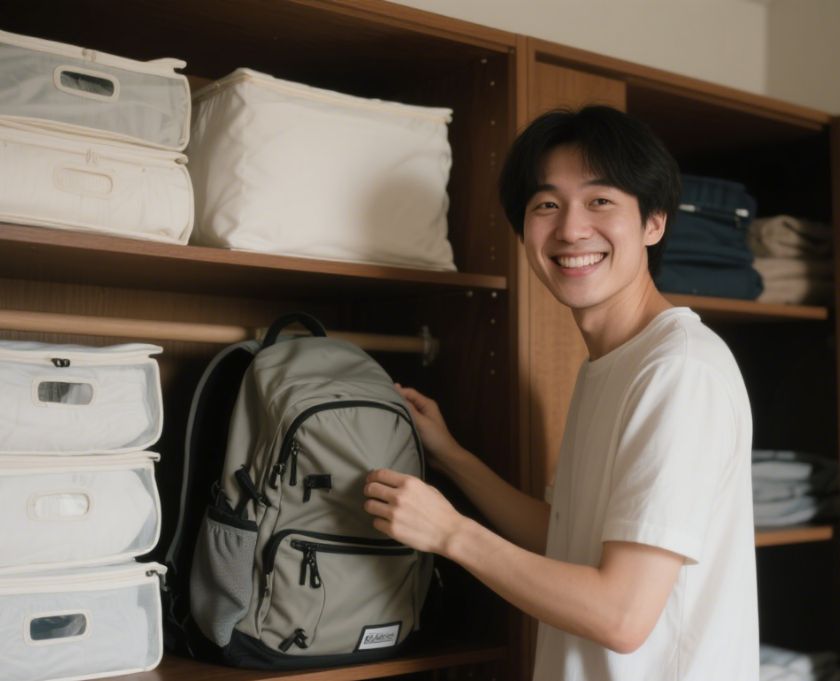Beautiful Plants For Your Interior

When it comes to smart packing, vacuum compression backpacks are a game-changer. But what if your model doesn’t have a built-in pump? No worries—you can still reduce bulk and maximize space without one. In this guide, you’ll learn exactly how to use a vacuum compression backpack without a built-in pump, using only your hands or simple tools.
1. What Is a Vacuum Compression Backpack Without a Pump?
Before diving into the process, let’s get clear on what we’re working with.
A vacuum compression backpack without a built-in pump is designed with airtight compartments or removable vacuum bags that allow you to manually remove air to compress your items—typically by rolling, pressing, or using an external pump.
These are often:
- Lighter than pump models
- Cheaper and more portable
- Ideal for ultralight travelers and hikers
They offer the same benefits:
✅ Save luggage space
✅ Keep clothes dry and organized
✅ Minimize wrinkles during transit
2. Items You’ll Need Before Packing
To get the best compression results, gather the following:
- The backpack with vacuum-compatible compression bag or compartment
- Your clothing or soft items
- A manual rolling surface (like a table or hard floor)
- Optional: an external mini hand pump (if supported)
Pro Tip: Stick to soft, air-trappable clothing like t-shirts, jeans, sweaters, and socks. Avoid fragile or rigid items that may resist compression.
3. Step-by-Step: How to Compress Clothes Without a Built-In Pump
Let’s walk through the actual compression process.
Step 1: Fold or Roll Clothes Tightly
Use a tight roll technique rather than folding flat. Rolling:
- Saves more space
- Helps eliminate air naturally
- Prevents wrinkles
Make sure each item is dry before packing.
Step 2: Load the Compression Bag or Compartment
Place rolled items into the vacuum bag or the compression layer of the backpack. Do not overfill. Leave at least 20% space for air to escape.
Step 3: Zip or Seal the Bag Securely
If your backpack has a ziplock-style vacuum pouch, make sure to seal it tightly. Some models have double zippers or Velcro systems to ensure air-tightness.
Step 4: Roll Out the Air Manually
Here’s where compression magic happens:
- Lay the bag flat on a solid surface
- Apply pressure at one end
- Roll toward the exit valve (or sealed end)
- Continue pressing to push out trapped air
The bag will visibly shrink as the air escapes.
Don’t rush. Slow, even pressure works best.
4. Maintenance Tips to Preserve Compression
To ensure your bag maintains performance trip after trip:
- Check the seal regularly for dust or debris
- Avoid overpacking, which may cause zipper failure
- Wipe down compression bags after each use
- Store the bag flat or loosely rolled, not folded
If you’re using third-party vacuum bags inside the backpack, check compatibility and replace them when the airtight seal degrades.
5. Pros and Cons of Manual Compression vs Built-In Pump
| Aspect | Manual Compression (No Pump) | With Built-In Pump |
|---|---|---|
| Weight | ✅ Lighter | ❌ Heavier |
| Convenience | ❌ Needs effort | ✅ Automatic air removal |
| Price | ✅ More affordable | ❌ More expensive |
| Maintenance | ✅ Less mechanical risk | ❌ Pump may fail or need charging |
| Portability | ✅ Travel-friendly | ❌ Bulky for minimalist packing |
Manual compression isn’t for everyone—but for minimalists, budget travelers, and hikers, it offers a solid, reliable solution.
6. When to Use This Type of Backpack
This style of compression backpack is best for:
- Short business trips (where minimal wardrobe is needed)
- Backpacking or trekking where weight is critical
- Budget travel with limited luggage allowances
- Urban travel where portability is key
It’s not ideal if:
- You’re packing bulky gear (like ski jackets)
- You need to access clothes frequently mid-transit
- You want zero manual labor while packing
7. Frequently Asked Questions (FAQs)
Q1: Can I use a vacuum cleaner to compress the bag?
A: Some models allow it, but it’s not recommended for backpacks without external valve access. Stick with rolling or hand pumps.
Q2: Will rolling really remove enough air?
A: Yes—if you do it slowly and evenly. It won’t reach full vacuum like a pump, but it removes up to 70–80% of excess air.
Q3: How long will the compression last?
A: As long as the seal holds. For most quality bags, that’s several days to weeks depending on temperature and handling.
Conclusion: Compact Travel Made Simple—No Pump Required
You don’t need built-in tech to enjoy the benefits of a vacuum compression backpack. With just your hands and a smart packing strategy, you can:
- Save luggage space
- Travel lighter
- Keep your items organized and dry
Whether you’re prepping for a weekend trip or a multi-country backpacking adventure, a manual vacuum compression system is still one of the smartest tools in your travel kit.